
7/14/23 Update – My list is largely unchanged from last year. As my daughter enters the third grade, we’ll be buying a lot of the same products this year. I’ve updated the list to add a few exceptional additions.
One very big piece of news since I last updated this post: Staples, of all places, has gone a big step in supporting USA-made products. Products that are made in the USA now have a little American flag icon (see the example product listing on Crayola Crayons).
At first I thought this was just a gimmick, but they’ve gone all in. Not only is there this icon on every product made in the USA, there’s also a filter option for “Made in America”. It’s a great step, and it’s why I personally will be shopping at Staples for all my office supply needs moving forward.
Original post follows:
My daughter will be going into the second grade this year. Every year our school’s PTA sends out a list of “required school supplies”. It took me two years to realize that this is just a little racket from the PTA to get us to buy from an educational supply company that buys school supplies in bulk, bundles them together, and resells them to parents. And of course, to maximize their profits the educational supply company goes for the lowest prices.
If you’ve ever used office supplies made in China, you’ve probably experienced an interesting phenomenon. When you unwrap the product it looks brand new. But you quickly find that sticky notes don’t stick, erasers get brittle, crayons snap after one use, and so on. What does the typical consumer do? Throw it into a landfill and buy a new one.
It’s kind of a microcosm for what’s going on in the world. Consumers don’t think about the long-term. And worse, they’re setting a horrific message to their kids.
The Lesson We Should Be Teaching Kids
Since I started this blog, every purchase I made goes through the same filter. 1) Is there an option NOT made in China? 2) If yes, buy it, even if it costs a little more. 3) If no, try to get it used. 4) If that’s not possible, hold your nose and buy the made in China one.
I noticed something. My daughter has started to ask me why I do this. And the cool thing is, that opens the door for me to teach her all kinds of things. I can teach her how to protect the environment by buying things that last instead of throwing things into the garbage. I can teach her the importance of supporting our local communities by buying from hard-working manufacturers in our country rather than slave-labor in China. I can teach her about the freedoms that citizens of China do not have–freedom of speech, freedom of religion, freedom of the press, freedom of assembly, and the freedom to petition your government for redress of grievances?
What I find terribly sad is that while kids still learn these principles in school (in theory), in practice our corporate and government leaders have abdicated all these principles. And for what?
The answer lies in another old document that’s collecting dust. “The love of money is the root of all kinds of evil”.
How I Put Together This List
I literally went through the list of recommended school supplies from the PTA. For each category, I researched extensively, both online and in my local stores.
One thing to bear in mind is that brands change manufacturers constantly. One year, a product might be made in Mexico or Vietnam or Indonesia, but the next year it might be made in China. So your best bet is always to go to a local store to see for yourself–thanks to the Tariff Act of 1930, every external package must be marked with country of origin information (Congress has failed us miserably in failing to pass legislation which mandates country of origin online).
I was pleasantly surprised to find lots of alternatives to China.
One thing I also found. Avoid “store brands” like the plague, whether it’s Target’s ironically-named “Up and Up” brand or Amazon’s “Amazon Basics” brand. Most are made in China.

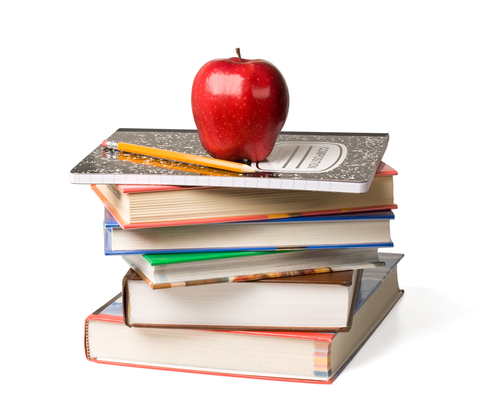
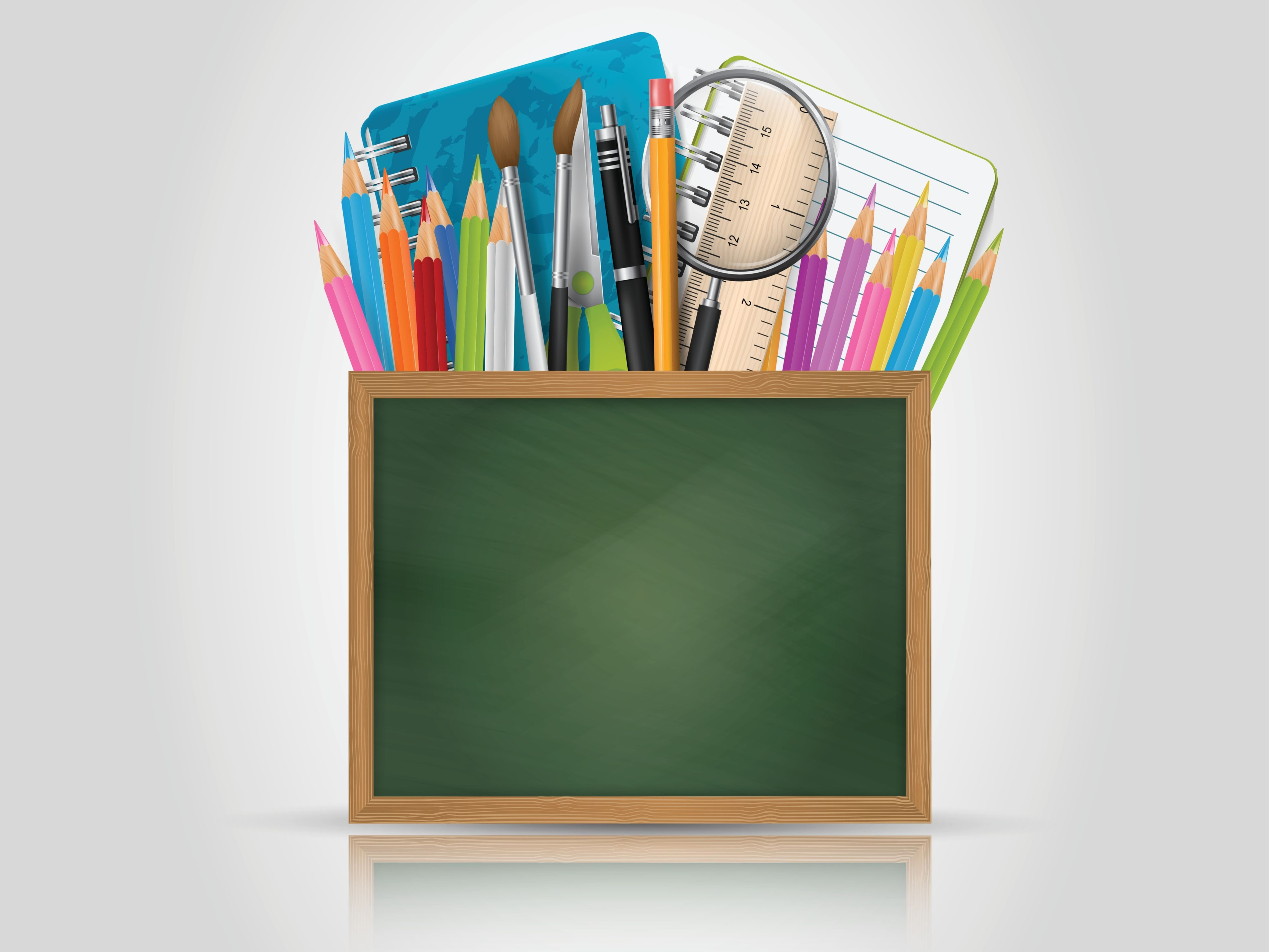
1. Pencils
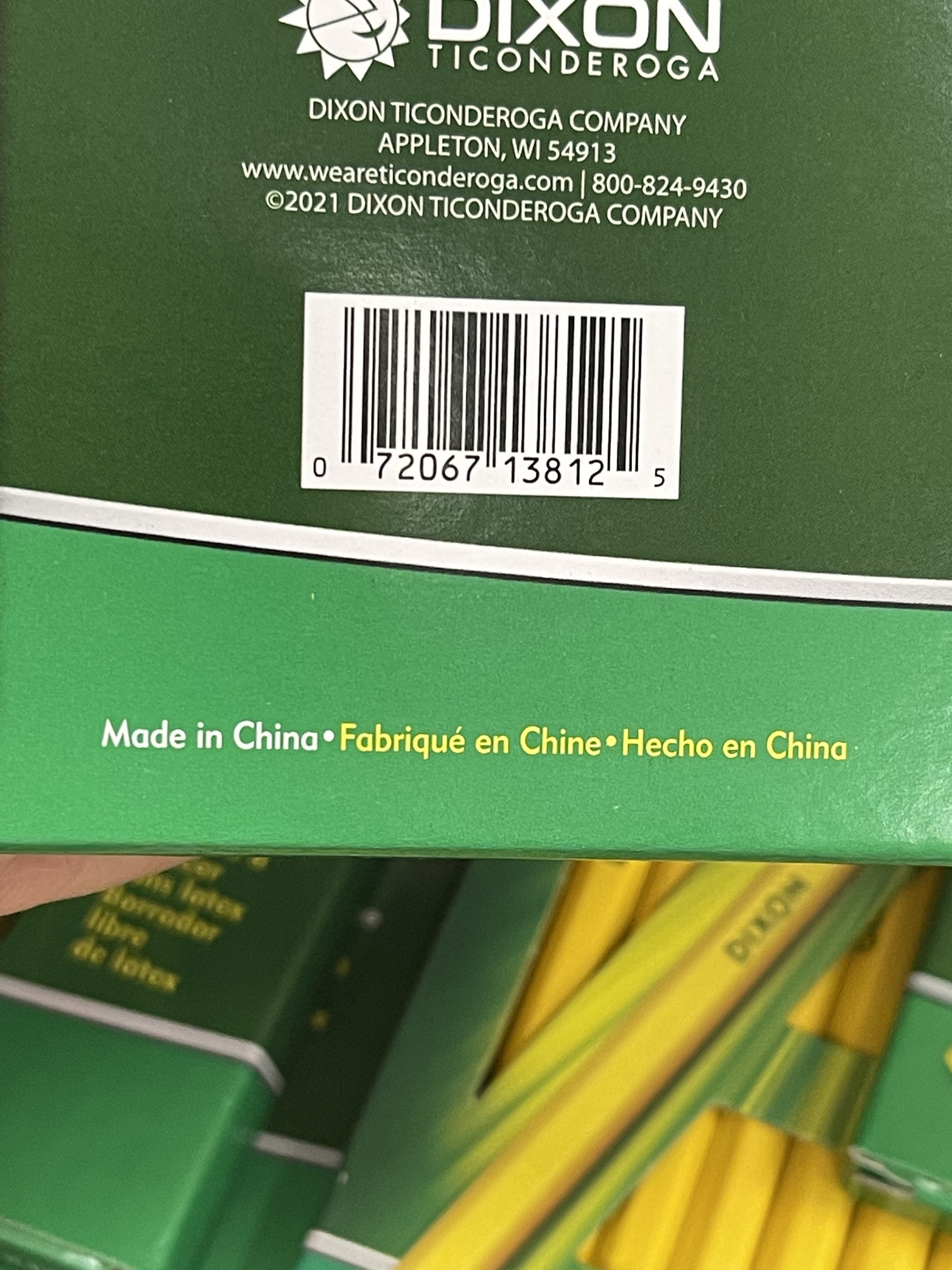
The PTA listed Dixon-Ticonderoga as their vendor of choice–they’re the classic “Number 2” pencil we all used growing up and have dominated at least 50% of the market. They had a storied history in the United States, but they sold out to an Italian art supply maker FILA in 2005, so aside from a handful employees left in their Lake Mary, Florida headquarters they have little to do with the United States, and nothing to do with their namesake town of Ticonderoga, NY.
Sadly, like so many market leaders, instead of helping their own countries or emerging markets over the years, they’ve shifted the bulk of their production to China. So yes, with the exception of a few “premium” lines of Ticonderoga pencils, every single package of “The World’s BEST PENCIL” I saw was made in China, with China wood, China graphite, and China craftsmanship. And consumers just keep buying it up without looking at the label. It’s enough to make you sick.
Happily, there are lots of choices of companies that have not sold out to China. Here are the best of the best brands I found in my research. Like I said, I’ll probably dedicate a full blog post for pencils at a later date.
USA Gold Pencils – One of the best examples of this is USA Gold Pencils. USA Gold was originally introduced by RoseArt as a “discount brand” to compete against Ticonderoga.
However, things changed in 2003 when RoseArt purchased J.R. Moon (a well-known Tennessee-based pencil maker established in 1961) and started producing pencils out of Tennessee.
In 2005, Mega Brands purchased RoseArt, and in 2014 Mattel purchased Mega Brands. Happily, “USA Gold” pencils appear to continue to be made in Tennessee. I purchased the box you see here, but you can also find them sold under different brand names. One example is The Write Dudes USA Gold Pencils.
I actually remember buying RoseArt pencils decades ago, and I remember them being flimsy, cheap, and with a “plastic-y” feel. But that’s all changed. I bought the box you see here and the pencils are excellent. The graphite is strong and sharpens evenly. The wood, according to the manufacturer, is made from California incense-cedar wood grown sustainably (contrast this to massive deforestation and clear cutting happening in China and all across Asia). Cedar is widely viewed as the best wood for pencils because it doesn’t splinted during sharpening.
It’s likely that some parts like the ferrules and erasers come from China with all of these pencils, but I like the fact that the manufacturing is done in the Tennessee, USA. I tossed all my Dixon-Ticonderoga pencils, and these are my new #1 pencil of choice
General Pencil Cedar Pointe No. 2 Pencil – General Pencil has been making pencils out of their factory in Jersey City, NJ since 1889. Their main business is in making colored, graphite, and charcoal pencils for artists, but their No. 2 pencils are among the best you can buy. According to the company owner, their company had to become a boutique brand just to compete with the onslaught of China products.
Be careful, as they do outsource some of their products to China, but these look “safe”. (I linked to Walmart’s listing, as Amazon’s listing is overrun with third party sellers who are price-gouging or clear counterfeiters). You can also buy directly from them.

Musgrave Ceres Premium #2 Pencils – The Musgrave Pencil Company is another pencil company that hails from Tennessee–they’ve been around since 1916. I do appreciate this company’s transparency. On this page, you can read the history of their products, and while at one point their pencils were made from Tennessee red cedar, they do reveal that since China flooded the market in the 1990’s, their business suffered, and the provider for their wood slats outsourced production of that part to China–in a bizarre twist, their supplier shipped wood from Oregon to China to be turned into slats and re-imported. But they kept their manufacturing in Tennessee, and
You can try Amazon or Walmart, but since both are overrun with third-party sellers and counterfeiters, I’d suggest buying directly from the source if you can’t find a product fulfilled by Amazon, Walmart, or a reputable third party seller (spoiler alert: a third-party seller with a name like “Books Direct” is probably trustworthy, a seller with a name like “jiningpinghongshangmaoyouxiangongsi” is probably not).
I’m seeing other examples of American made pencils such as America’s Finest, America’s Standards, so there’s certainly lots of alternatives to Dixon-Ticonderoga. Let’s send them a message.
BIC Xtra-Smooth Mechanical Pencil, 40 Count – I was pleasantly shocked when I walked into my local CVS and saw a pack of BIG Xtra-Sparkle Pencils, flipped the package over, and saw “Made in France” on the package. While not all of their products are made in France (their colored mechanical pencils are made in China), I’m happy to see these still getting produced there. I’m equally surprised that they don’t publicize it on their online product listings, which means either their marketing department is completely clueless, or they want to reserve the right to close down their European manufacturing and ship everything to Asia. Let’s hope it’s the former. In the meantime, snatch these up, both to send a message that you value things that are made in Europe, and also as insurance in case these are not available in a few years.
2. Erasers

Ticonderoga Erasers – As much as I pooh-poohed Dixon-Ticonderoga pencils, I have to give them credit for making erasers in Taiwan. I was able to corroborate that as of right now, they’re all still made in Taiwan.
Most prominently, this includes their classic Pink Carnation Wedge erasers, but also some of their cute novelty erasers like these pencil-shaped erasers or these neon colored ones, which are usually the first things to go to China.
The one advice I’d have is to try to buy in a brick-and-mortar store, and be sure to check the label. Given Dixon-Ticonderoga’s track record, I’m not sure if I’d trust them not to switch over manufacturing to China at some point. But for now, enjoy a high quality product from the free Republic of China.
By the way, avoid PaperMate Pink Pearl erasers, which look similar but are made in China.
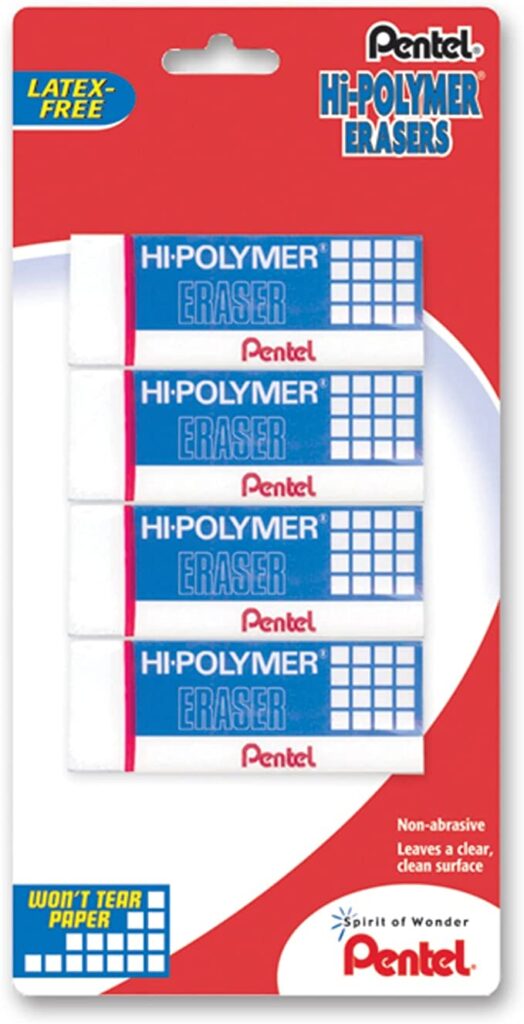
Pentel Hi-Polymer Erasers – Sometimes I want to just shake some sense into some of these companies who don’t know how to market their own products.
Here’s a good example. These Pentel Hi-Polymer Erasers are made in Taiwan as well, but you can’t see any mention of the country of origin on their Amazon product page. Idiotic, because putting Taiwan as the country of origin would surely impress some people, while leaving it off will make people naturally assume it comes from China.
As for the erasers themselves, they work great. Read the rave reviews on Amazon of how these erasers erase even the hardest pencils to erase, all without leaving too much gunk behind.

Staedler Erasers. h/t to Paul on the Forum for turning me onto these. Staedtler is a German company founded in 1835 and is one of Germany’s oldest industrial companies. They make artist-grade pencils and great erasers too. These particular erasers are made in Germany and, like the Pentel erasers, erase like magic with very little residue.
Many reviewers on Amazon have raved about how these are the best erasers they have ever used.
3. Crayons
For crayons, there’s of course no bigger name that Crayola, and to their great credit, Crayola has been one of those American companies that has protected their crown jewels by not allowing their products to be outsourced to China. There’s a reason that China-made crayons are terrible–chances are if you’ve gotten crayons at a restaurant you’ll know what I mean. They shatter easily and the colors don’t transfer onto the paper. Bottom line, Crayola was wise enough not to hand over their intellectual property to China subcontractors, who would have no compunction against stealing every trade secret despite whatever papers they signed.
I’ve had the pleasure of visiting The Crayola Experience in Easton, PA, where they have lots of fun activities and interactive exhibits for children. It’s not an actual “factory tour” (the actual crayon factory is closed to the public), but it certainly does a good job of letting you experience different aspects of crayon making (including, awesomely enough, printing your own custom crayon wrapper).
That said, you have to be careful with Crayola products. They’ve gotten so successful with crayons that they’ve branched out to many other product lines. Some (like markers) are made in their factories in Pennsylvania, but many products are outsourced to China. My best advice is to go to your local Target or Walmart and check for yourself if you can’t if you can’t find country of origin online. But rest assured that their crayons are all from the USA.
I decided to link to Walmart because shopping on Amazon has become an exercise in confusion as Amazon has let their site become overrun with counterfeiters, third party sellers who are jacking up prices, and cross-selling to cheap China crayons. If you dare go to Amazon, you can find Crayola crayons here.
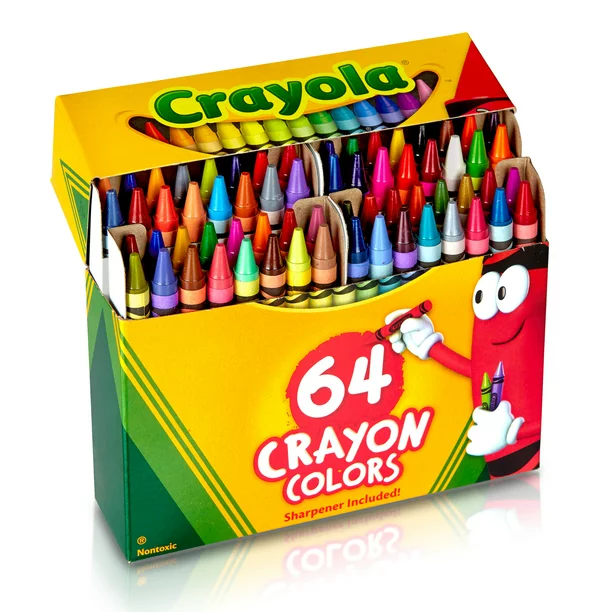
Crayola Crayons, 64 Count – This is the iconic set of crayons we all grew up with and yes, it still comes with a sharpener.
Crayola Crayons, 24 Count – This is the most popular set being used in classrooms.
Crayola Crayons, 96 Count – This is a selection of 96 classic crayons.
Crayola Crayons, 168 Count – This is the ultimate set of Crayola crayons. It comes in a tub and contains 32 specialty crayons, 24 “colors of the world” crayons depicting different skin pigmentation (also available separately), and every color imaginable.
4. Color Markers
If you need markers (or as we used to call them, “magic markers”), there are also a number of good options.
It goes without saying that you need to avoid any no-name or nonsense-name brand marker from China, including Amazon Basics. When you have alternatives that are made in the US that aren’t that much more expensive, why save a few pennies for products that you know will not last?
Crayola Markers (Broad Line), 10 Count – These are the classic thick markers kids can use to color drawings, posters, signs, and other projects. They also come in a more expensive washable model which is much easier to clean off of walls and furniture, as well as fine line for more detailed coloring.
All are made in the USA, although it astounds me that Crayola doesn’t do a good job of broadcasting this on their product listings.
Mr. Sketch, 22 Count – I remember using Mr. Sketch markers in the third grade, and when I bought a set for my daughter, I took out the grape, gave it a sniff, and memories of sitting in Mrs. Morse’s art class came flooding back.
The manufacturer, DYMO, is careful to say these are “assembled in the United States”, which probably means that parts come from you-know-where. But at least some folks in the US are employed.
5. Gel Pens
Years ago I remember when the adult coloring craze started, on one Amazon Prime Day I bought a set of gel pens with a price that seemed too good to be true. It was some ridiculously low price like $8 for 100 pens or something. And surprise, it was too good to be true. When it came time to use them, every pen had dried up or exploded. But at $8, I did what every other American consumer did–toss into the trash and buy another one. Until I woke up. Today, I’m smart enough to spend extra money (and it isn’t even a whole lot) to buy quality that lasts. Let’s hope my fellow citizens learn the same lesson fast.
PaperMate InkJoy Gel Pens, 14 Count – As I’ve mentioned with their erasers, you have to watch out with PaperMate products, but when I saw these gel pens in Walmart, the back of the package said they were made in Mexico and South Korea.
If you’re in the market for gel pens for adult coloring or writing, these are a good bet.
Uni-Ball Signo 207 Gel Pens – For years, I’ve always sworn by Uni-ball pens for writing and I always wondered why. I realized something I hadn’t for all those years–these pens are made in Japan.
When I go to conferences I always load up on “free pens”, and I notice that after about half a year they all stop working. I have Uni-Balls from decades ago that still write perfectly with ink that flows smoothly.
5. Colored Pencils
Our PTA recommended that we buy Crayola Twistable Color Pencils. I was horrified to find not only that these pencils were made in China, but that they’re single-use mechanical pencils, meaning that once you’re done with them, you throw the whole thing into the garbage, which ends up in a landfill. But sadly, children think they’re “cool” so millions of parents throw money at them.
This was one of those teaching moments for my child, not just to teach her about the folly of supporting China, but also about the foolishness of consumerism gone amok. The point is–when you’re done with a regular color pencil, you have nothing but a nub in your hands because you’ve used the rest of the pencil to its fullest. When you’re done with a Twistable, you create needless waste.
Honestly, I wish Crayola had a little more discipline towards creating more sustainable products, but I suppose like everyone else they need cheap China goods to make their quarterly earnings numbers. The only way to get them to stop is if more consumers refused to be taken in.
Crayola Colored Pencils, 24 Count – Well, happily, Crayola does seem to be trying to give consumers an out. These are their colored pencils, which are made in Brazil.
Also happily, Crayola has made commitments to use only reforested wood, meaning that no rain forest was harmed in the making of these pencils.
Prismacolor Colored Pencils, 24 Count – These colored pencils were name by Wirecutter as the best you can buy, and happily they’re made in Mexico and not China. They also come in a model that’s erasable, also made in Mexico.
6. Pencil Boxes
One of the required products on my list was a “clear plastic pencil box”. For this product I figured, there’s no way I’m ever going to be able to find one that’s not made in China.
But I was shocked to find these boxes from Sterilite. Not only did they meet the size requirement of the list, they were amazingly cheap at under $1 each.
7. Pencil Sharpeners
Pencil sharpeners are another category that I thought were impossible to find, as American brands like X-ACTO have long since sold out to China, and it’s virtually impossible to find an electric pencil sharpener not made in China. But here are some promising alternatives. Sadly, once-great brands like Staedtler, Faber-Castell, and Bostitch have sold out to China, so support these companies while you still can.
KUM Automatic Long Point Pencil Sharpener – Another hat tip to Paul on this one. He mentioned KUM as a brand that they can buy in Europe, and lo and behold I found that third party sellers on Amazon are selling them. As with all third party sellers, beware of price gouging and counterfeiters.
Amazon actually has a lot of KUM products available, from simple rectangular sharpeners to ones made of glass to sharpeners for lefties. They may not be a familiar name to shoppers in the US, but in Germany they’ve been around since 1909.
Mobius + Ruppert (M+R) Brass Artists Pencil Sharpeners – These aren’t really for small kids, but if there’s an art student or teenager in your life who appreciates German-made quality that’ll last a lifetime you’ll want to get him or her one of these, made from indestructible brass. There are rightfully listed as the finest pencil sharpeners in the world, and because they’re not electric you can sharpen your pencil to precisely the sharpness you want without your whole pencil being eaten up. It comes in four shapes–a classic single hole sharpener (600), a two hole sharpener with round design (602), a two hole sharpener with wedge design (603), and a single hole sharpener with bullet design (604). You can even buy replacement blades and use a screwdriver to replace it yourself when the blade gets full (as opposed to throwing the whole thing away.

Kutsuwa T’GAAL Multisharpener – This is a highly-rated sharpener from Japan that’s pretty ingenious. It has five settings so you can set the size of your lead tip. Shorter tips are sturdier (think a golf pencil) while longer lead lasts longer (think a standard pencil sharpener).
8. Dry Erase Markers

For dry erase markers, the only name in town is EXPO, and happily they still make sets like these Low Odor Dry Erase Markers with Chisel Tip (thicker) or Ultra-Fine Tip (thinner) in the US.
Annoyingly, Amazon has gotten China manufacturers to make their “Amazon Basics” brand, which are just as worthless as the dozens of other China brands flooding their search results. But just try using one and you’ll experience markers that streak, that smudge, that dry out, and that otherwise will make anyone buying them look foolish for trying to save a little money on clearly inferior products.
9. Post-It Notes
Post-it Notes, 12 Pads – On that same subject, have you ever used a Post-It Note that was not made by 3M? Chances are the note faded or more likely, the sticky glue on the back stopped sticking.
The story of Post-It Notes is classic Americana. In 1968, a scientist at 3M named Dr. Spencer Silver was trying to perfect a super-strong adhesive, but in the process accidentally created the “low-tack” adhesive. From 1968 to 1974 no one paid any attention to this invention, but in 1974 a colleague named Art Fry came up with the idea of using this adhesive to put bookmarks in his hymn book that wouldn’t fall out of the book. The rest, as they say, is history.
Even though 3M’s patent expired in 1997, 3M continues to produce the best Post-It Notes. Amazon, of course, is pushing China-owned brands like “Teskyer” and “Vanpad”, but these are all cheap knockoffs that won’t stick and that will be noticeably flimsier. And of course, they are not made in the USA, as 3M continues to do with its Post-It Notes. They of course come in many colors and sizes, but the classic yellow 3×3 is still the way to go.
10. Composition Books
Like many of you, when I was a kid I used composition notebooks, those hard-cover books with the black-and-white marbled design on the cover. And now, decades later, I’m buying them for my daughter. There are a dizzying number of companies to choose from.
As with many other products on this blog post, I started out thinking of these as just another commodity, but the more I researched the more I realized the storied history behind composition notebooks. In modern times, the practice of binding a book and slapping on a hard cover with a marbled design started in Germany and France, and made its way to the United Sates in the late 1800’s.
Roaring Spring Composition Book – By many accounts, these were one of the original composition books to be sold in the United States. They’re still produced out of Roaring Spring, Pennsylvania. Strangely, when I look at Amazon or Walmart all I see are price-gouging third party sellers. But you can get the real deal at many office supply shopes like Staples and Office Depot.
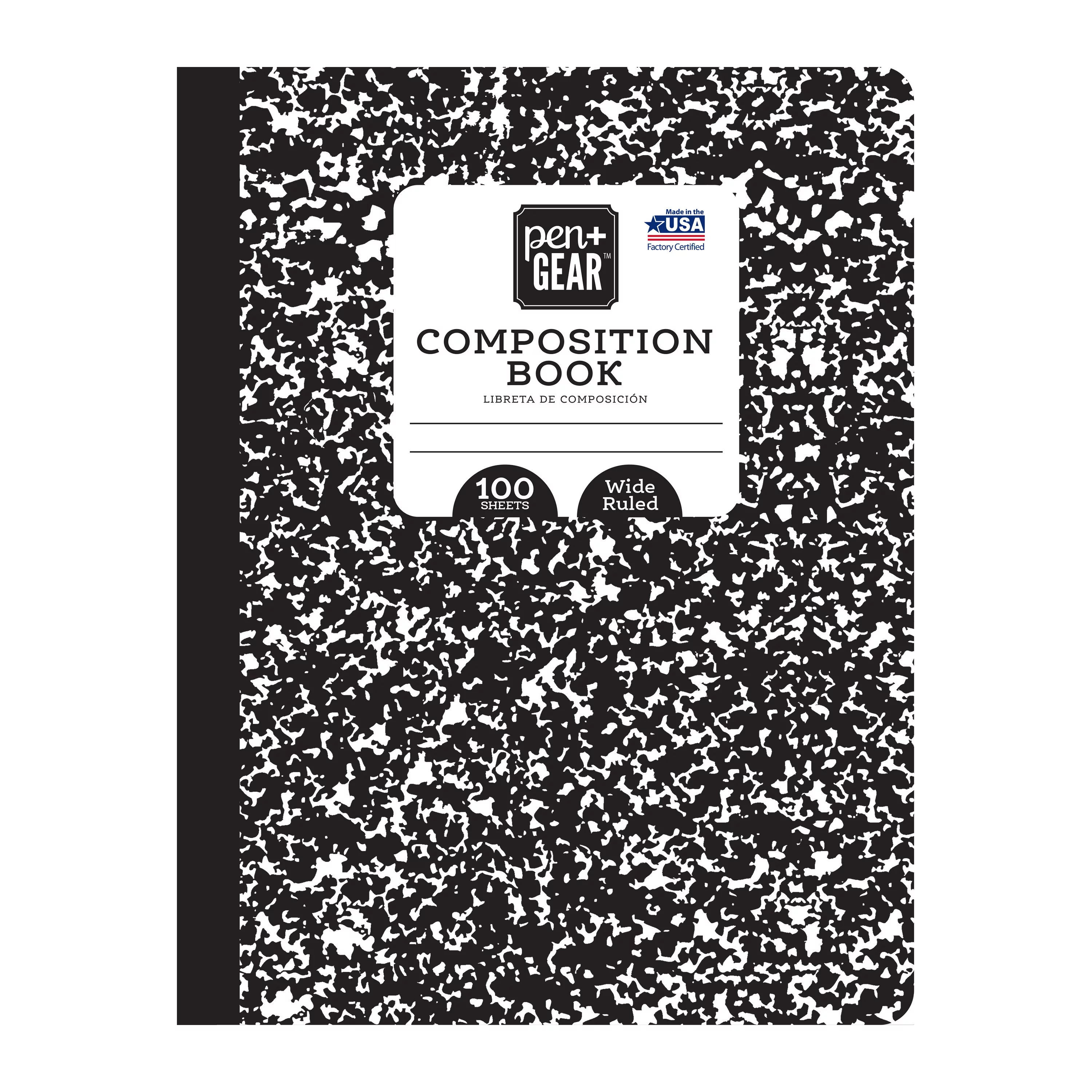
Pen + Gear Composition Book – This is Walmart’s store brand but it’s different from other storage brands (I’m talking to you, Amazon Basics) in that Walmart didn’t rush to China to get their products produced. Their pencils and folders are made in India, and these composition books are made in the USA. Even more shocking, they’re cheaper to buy than others made in China. Walmart isn’t perfect of course, but it’s nice to see them making a much stronger effort than Amazon of diversifying out of China.
11. White Out
BIC Wite-Out Correction Tape – I was pleasantly surprised to buy a package of BIC Wite-Out Correction Tape and find that it was made in Japan. BIC is the leader in this category and it would have been easy for them to slash their production costs by going to a low-bid producer, but it seems that they know where their bread is buttered—if you’ve used other brands you know they end up being chalky and disintegrating as soon as you write on it. BIC comes out smooth and goes on strong and instantly with no wrinkles or tears.
If you prefer correction fluid, BIG also makes Wite-Out Quick Dry Correction Fluid. This is made in Malaysia, although I was also able to find this model with both a brush and a pen nib that was made in Taiwan.
Paper Mate Liquid Paper Fast Dry Correction Fluid – I notice that Paper Mate’s Liquid Paper Correction brand also manufactures its products outside of China. Their correction fluid is made out of Thailand, and their correction tape also comes from Malaysia.
I’ve always been partial to Liquid Paper’s correction fluid for years, although according to reviewers both BIC and Paper Mate products work just fine.
Perhaps what surprises me most about the “white out” category is that the two main players seem to be avoiding China like the plague. It’s easy to see why; brands that turned to China manufacturing get tons of negative reviews talking about how watery they are and how they don’t cover. BIC and Paper Mate were wise to keep their products produced elsewhere.
Conclusion
That’s all I have time for right now, but time permitting I’ll add to this post or create a new one with other supplies, like highlighters, permanent markers, and more.
I was happy that with only a few exceptions, I was able to find at least one of every item on the PTA’s list that wasn’t made in China. While I wish this was because of the integrity of these companies, I suspect that many of them were forced into the decision because of the 2018 Tariffs. In either case, that’s a good thing. Ironically, not only did I not pay more for products not made in China, in some cases I paid a lot less. And the quality of these products is amazing–while her classmates deal with dried out erasers and crayons that don’t work, my daughter will have supplies that will last her beyond the school year.
Of course, the PTA themselves and the educational supply company that they used didn’t care–the bundle they were selling to parents was chock full of China-made stuff.
This is a good example of what we need to do as consumers. While everyone else is acting like sheep, blindly buying what they’re told to buy or what their friends are buying, we can chart a different course. It felt great to send my kid off to school, knowing that at least we weren’t going to be adding to the trend of selling out our kids’ futures to the communist Chinese using the very educational supplies that they need.
Do you know of other school and office supply products worthy of mention here? Let us know in the comments!

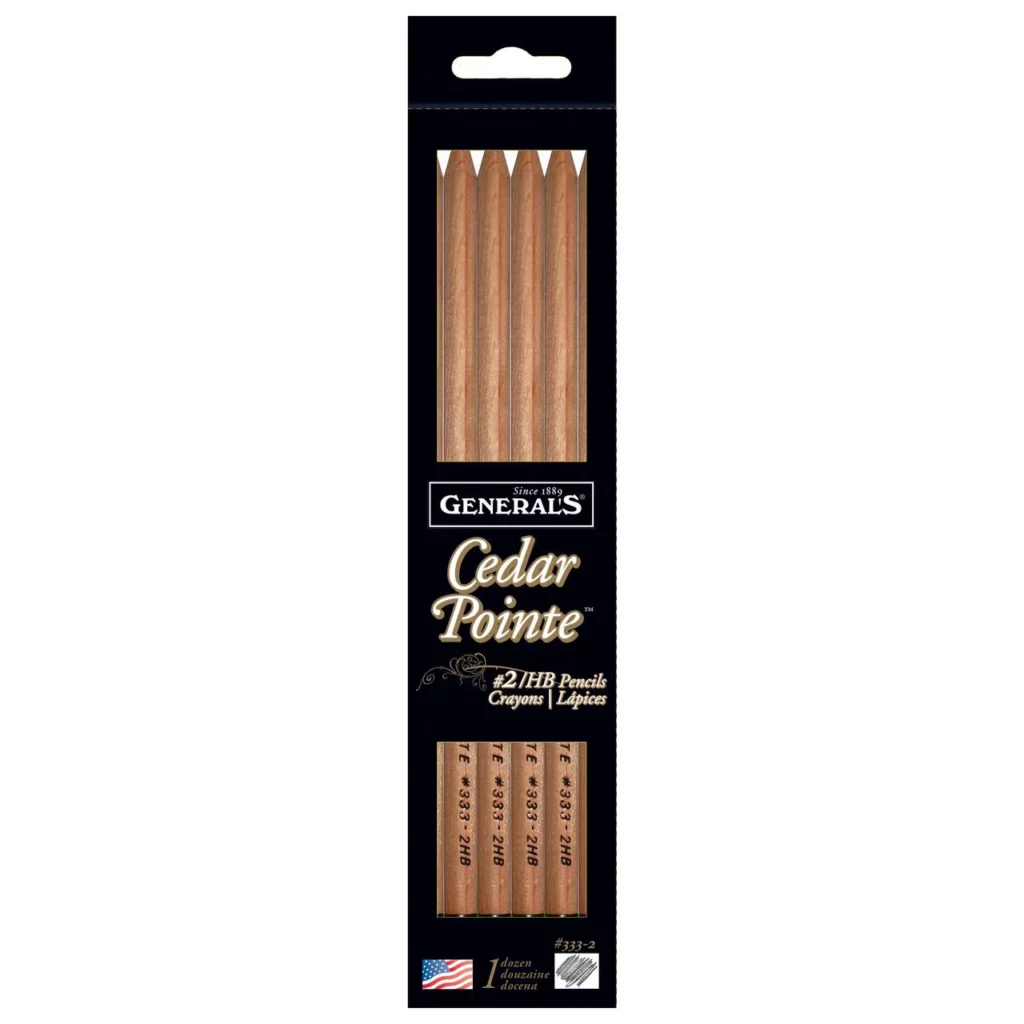



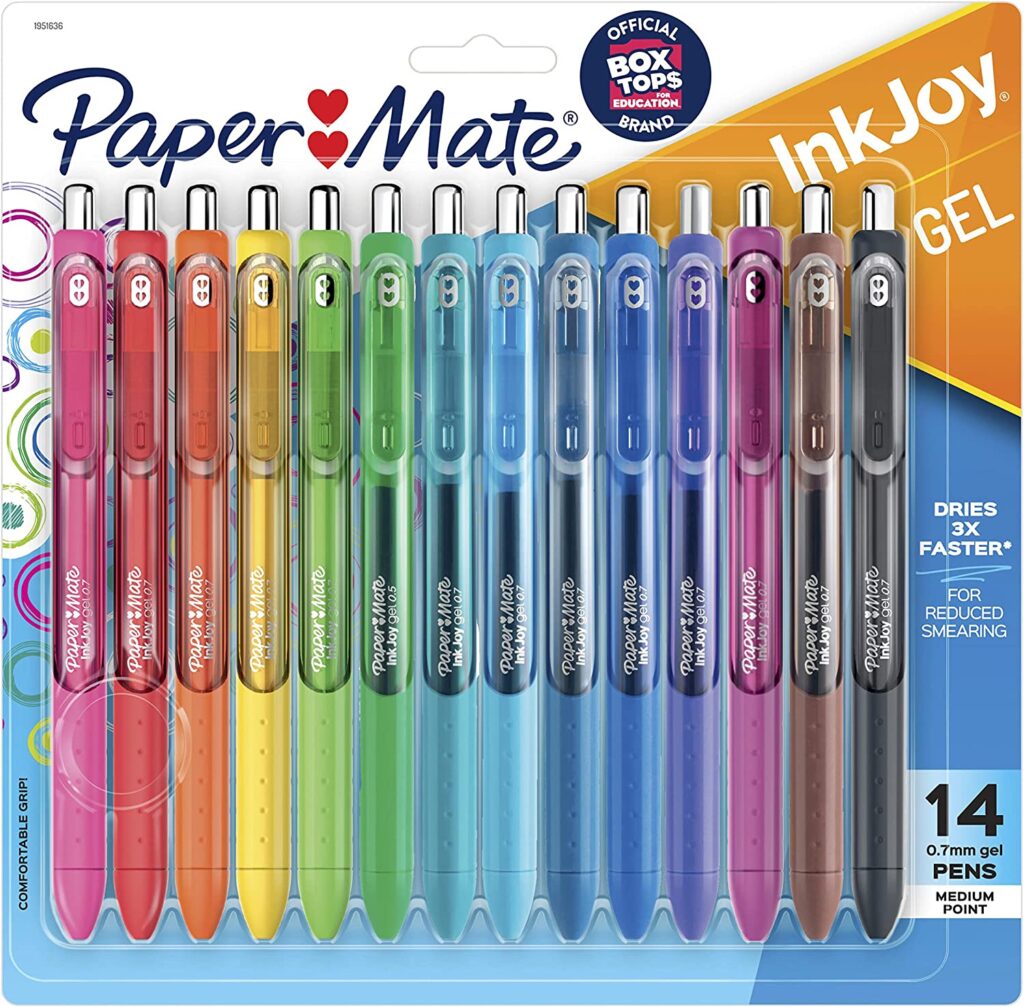


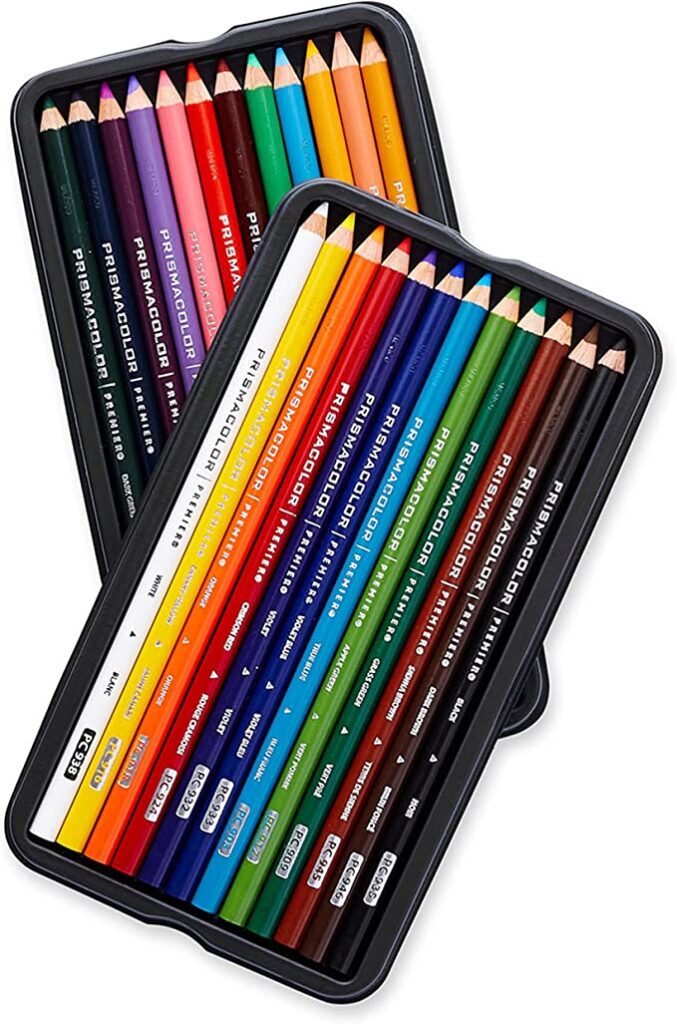




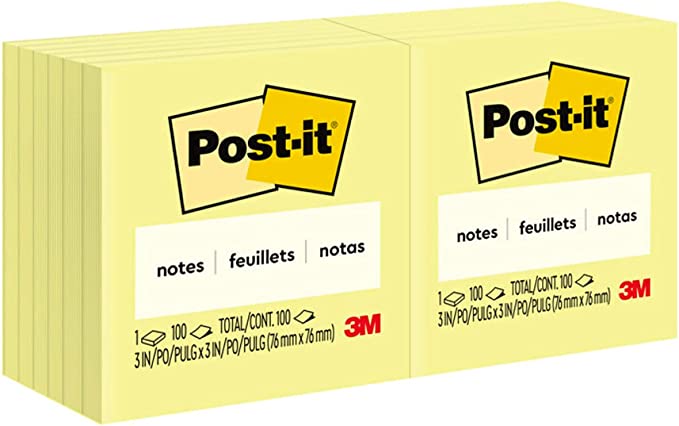
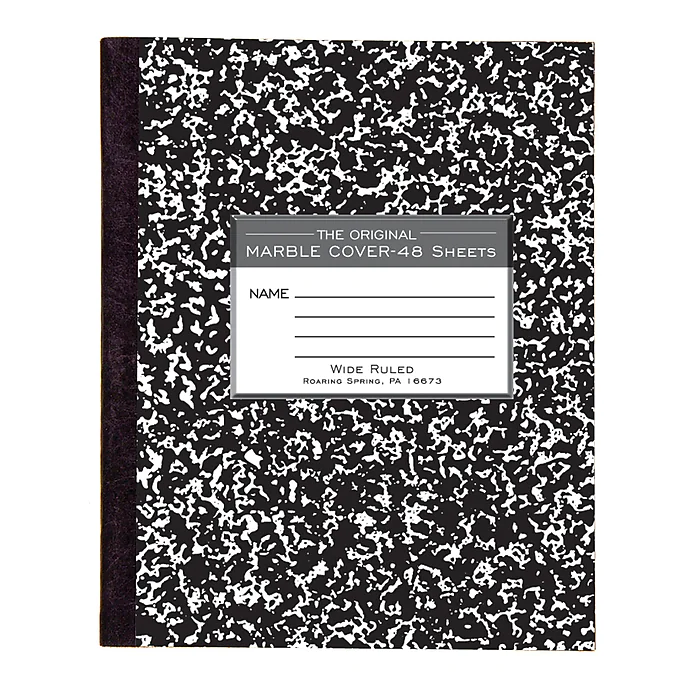


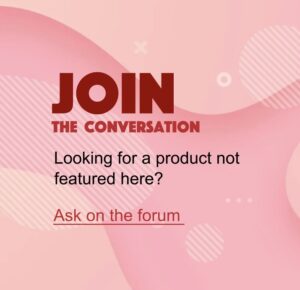
Thank you all of your efforts! I appreciate the insights and will follow your recommendations. I want to avoid buying from China but it is difficult.
Thank you for this list!!!
I do not think any PTA would recommend a manufacturer or vendor or company to buy any product. The list might be a compilation of products your schools/ teachers etc, want and PTA might be just facilitating. If your PTA is recommending a product or vendor, please let me know. They are not supposed to do so. PTA doe not recommend one company or the other, nor do they promote any product. It is concerning that you have used “PTA” term. we do not take it lightly when it comes to 501 3(C) rules. I would like to know more about what school, what state, and what did they actually say. Pictures will greatly help. I look forward to hearing from you